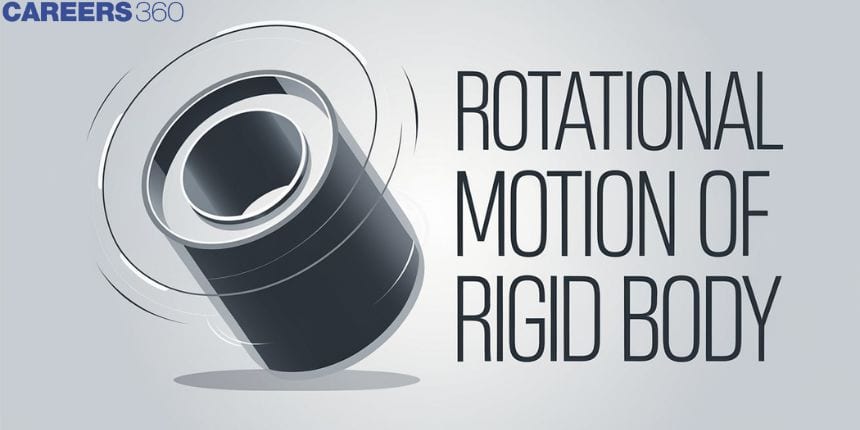Rotational Motion Of Rigid Body
Rotational motion is a fundamental aspect of physics that describes the movement of objects spinning around a fixed axis. When we observe a ceiling fan rotating, a spinning top, or even the Earth revolving around its axis, we are witnessing rotational motion in action. Unlike linear motion, where an object moves along a straight path, rotational motion involves objects moving in circles or around a central point. In the context of a rigid body, which does not deform under the forces applied to it, the entire body moves in a synchronized manner, maintaining its shape and size. This concept is crucial in understanding the behaviour of various machines, from simple wheels to complex gears in engines, and plays a significant role in disciplines like engineering and robotics. Understanding rotational motion not only helps us grasp the mechanics of everyday objects but also enables us to design and innovate in ways that make our lives easier and more efficient. In this article, we will discuss the rotational motion of the rigid body, its examples, and the definition of rotational Motion.
This Story also Contains
- What is a Rigid Body?
- What is Translation Motion?
- What is Rotational Motion?
- Some Important Terms Used in Rotational Motion
- Solved Examples Based on Rotational Motion
- Summary

What is a Rigid Body?
A rigid body is an idealized concept in physics that refers to an object with a fixed shape and size, where the distances between any two points within the object remain constant, regardless of the forces or torques applied to it. In other words, a rigid body does not deform, bend, or compress under the influence of external forces.
What is Translation Motion?
Translational motion refers to the movement of an object in which all its points move in the same direction and cover the same distance in a given period. This type of motion occurs when an object shifts from one position to another along a straight or curved path without rotating. If a body is moving such that a line drawn between any two of its internal points remains parallel to itself.
- All the particles of the body move along parallel paths.
- All the particles of the body follow 1 D motion.
Example- Motion of a body along a straight line.
What is Rotational Motion?
A rigid body is said to be in pure rotation if every particle of the body moves in a circle and the centre of all the circles lies on a straight line called the axis of rotation. The line joining any two internal points does not remain parallel.
Example-motion of wheels, gears, motors.
Some Important Terms Used in Rotational Motion
What Is the System?
A system is a collection of any number of particles interacting with one another and is under observation for analysing the situation.
What are Internal Forces?
Internal forces are all the forces exerted by various particles of the system on one another. Internal forces between two particles are equal in magnitude and opposite in direction.
What are External Forces?
External forces are the forces that we have to apply on the object/system from outside to move or stop the object/system.
Recommended Topic Video
Solved Examples Based on Rotational Motion
Example 1: The internal forces between two particles are
1) Equal in magnitude only
2) Equal in magnitude and direction both
3) Equal vectors
4) None of the above
Solution :
Internal forces
Internal forces are all the forces exerted by various particles of the system on one another. Internal forces between two particles are equal in magnitude and opposite in direction.
Hence, the answer is the option (1).
Example 2: In the case of pure rotation, if we join any two internal points by a line then -
1) They will intersect each other
2) It will remain parallel always
3) It will form a cycloidal path
4) None of the above
Solution:
When a body undergoes pure rotation then the line joining any two points also rotates which will cause the intersection of the line joining both points.
Hence, the answer is the option (1).
Example 3: In the rotational motion of a rigid body, all particles move with
1) same linear and angular velocity
2) same linear and different angular velocity
3) with different linear velocities and the same angular velocities
4) with different linear velocities and different angular velocities
Solution:
Rotation
A rigid body is said to be in pure rotation if every particle of the body moves in a circle and the centre of all the circles lies on a straight line called the axis of rotation.
wherein
The line joining any two internal points does not remain parallel.
In a rigid body

all particles rotate with the same angular velocity but different linear velocities
r is different for all particles
Hence, the answer is the option (3).
Example 4: A metal coin of mass 5g and radius of 1 cm is fixed to a thin stick AB of negligible mass as shown in the figure. The system is initially at rest. the constant torque, which will make the system rotate about AB at 25 rotations per second in 5s, is close to:

1)
2)
3)
4)
Solution:
Hence, the answer is the option (4).
Summary
This article covers the essential concepts of rotational motion in rigid bodies, distinguishing it from translational motion. It explains the key terms like the system, internal forces, and external forces, providing clarity on the principles that govern rotational dynamics. The article also includes solved examples that illustrate these concepts in action, making the understanding of rotational motion more practical and applicable.